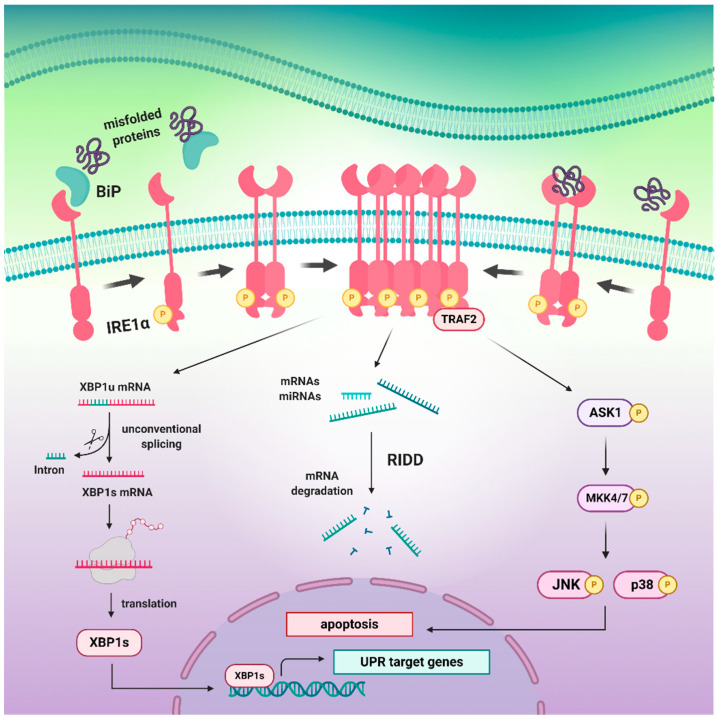Figure 2.
The activation of human inositol-requiring enzyme type 1α (IRE1α)-dependent signaling pathway with its downstream targets. The IRE1α activation occurs upon association of binding immunoglobulin protein (BiP) with misfolded protein and its subsequent dissociation from IRE1α, or alternatively upon direct binding of misfolded protein by the N-terminal luminal domain (NLD) of IRE1α. The following oligomerization, often of more than four IRE1α molecules, is required for further trans-autophosphorylation process and activation of kinase and RNase domains. The full kinase/RNase activity positively correlates with the increasing number of IRE1α oligomers. Activated IRE1α induces the following cellular processes: The unconventional splicing of x-box binding protein 1 (XBP1) mRNA, regulated IRE1-Dependent Decay (RIDD) and TNF Receptor Associated Factor 2/apoptosis signal-regulating kinase 1/mitogen-activated protein kinase kinase4/7/c-Jun N-terminal kinase/p38 (TRAF2/ASK1/MKK4/7/JNK/p38) signaling pathway. The pro-survival or pro-apoptotic effect of IRE1α activation is exerted by selective induction of its specific branches and depends on numerous factors, mainly the severity and timing of cellular stress conditions.

